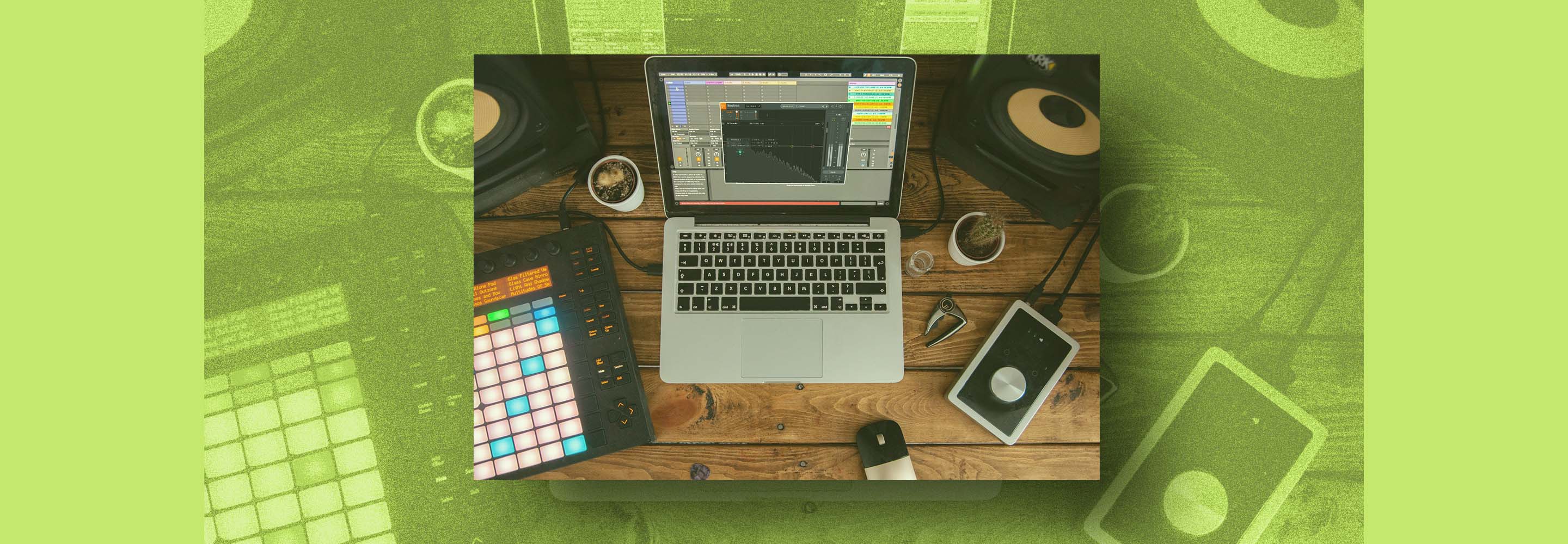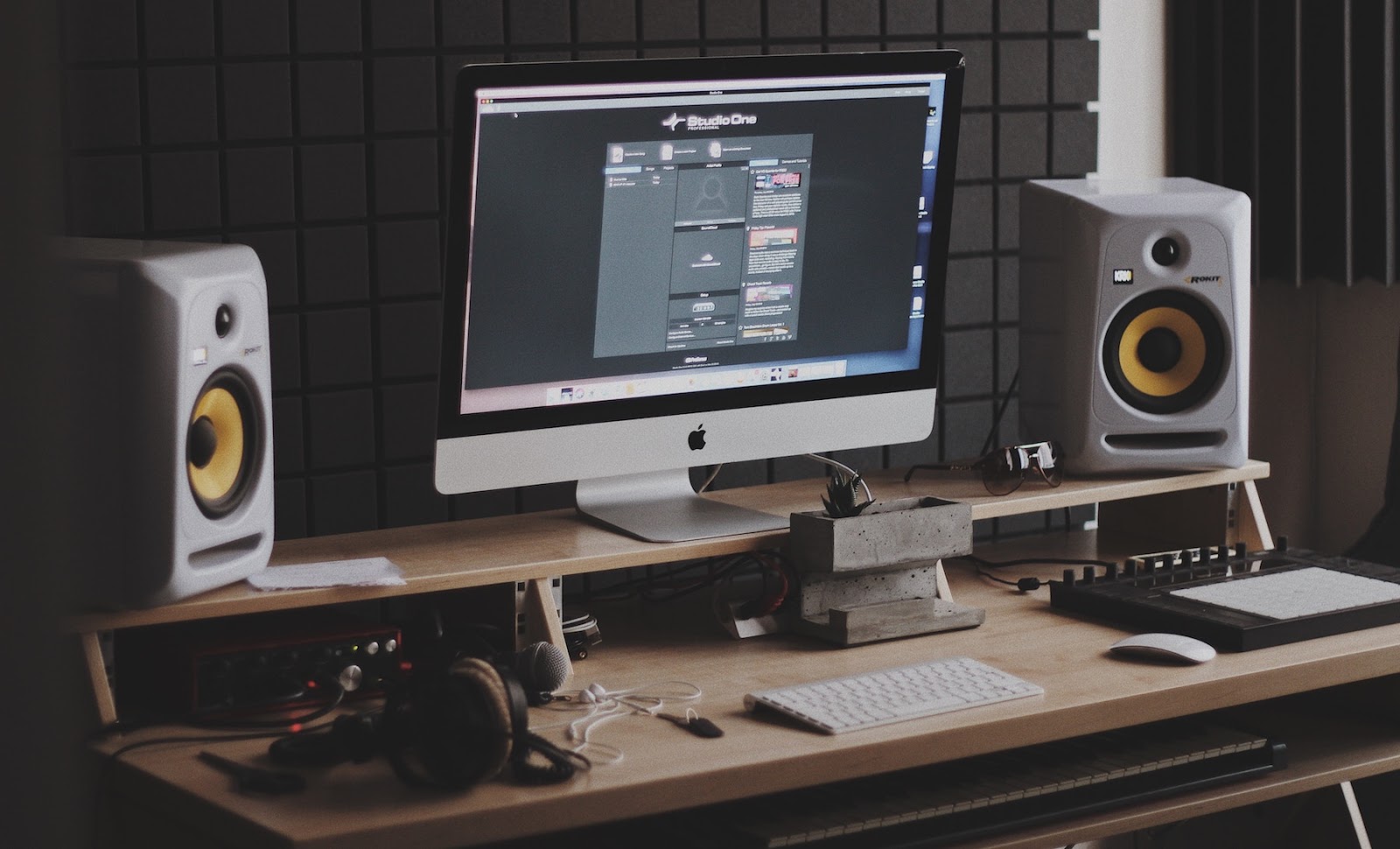
Home Recording Tips: Which Room Should You Record In?
In these home recording tips, learn how to use the sounds of the different rooms in your apartment or house to compliment your recordings.
Many of us do not have access to fancy recording studios, which means we have to get creative with where we record. And for most of us, this means we record in our homes.
Here’s the unfortunate truth about our homes: these spaces were designed for living, not recording. To the extent that these rooms have a vibe, it’s a locational one; they are not purpose-built for a fantastic sound.
But this doesn’t have to be a problem. Yes, your home-recording environment can leave a not-so subtle sonic imprint on your creations. Still, with a little know-how and some good old fashioned experimentation, you can get a great sound in your house and discover best place to record audio at home.
We’re going to show you how to do that with essential home recording tips—but first, we’ll start with a fundamental question.
What kind of room is best for recording?
The best room to record in depends on several factors, including the room's shape, size, and acoustics. A room with a moderate size, minimal echo or reverberation, and good sound insulation is preferred for recording audio.
Soft furnishings, carpets, and curtains can help absorb unwanted sound reflections and improve the overall sound quality of the recording in a particular room.
When we're talking about specific rooms in a house: there’s not one room that’s the best for recording—but there will be a room in the house that’s suitable for the task at hand, whatever it happens to be. You just have to know which approach complements your music; and, you have to know how to approach the recording, no matter your decision.
When making that decision, it's important to know about “room sound,” a phenomenon that is unavoidable.
Recording audio with a microphone will cause the the mic to pick up more than whatever you put in front of it. It also captures the sonic characteristics of the room. You might aim your guitar right into that microphone, but the sounds coming from it are taking a trip around the space, bouncing around your walls, getting absorbed in that pile of clothes in the corner, and being influenced by anything else in the environment. This is how the “sound” of your room makes it into your recordings. It’s also why no two rooms sound the same.
There are two trains of thought when it comes to room sound: you can minimize it with extensive room treatment, careful mic placement, proper mic technique, and software like iZotope RX; or, you embrace the room sound and use it to your advantage.
It’s worth noting that the famous reverb chambers of yore originated as unused rooms in old studios. If a plug-in company might want to sell you the classic reverb of a whole genre of classic music, there’s a good chance this reverb is nothing more than an attic that happened to sound good.
Now while It’s possible you have a fantastic reverb chamber in your bathroom, it’s equally likely you have the worst-sounding echo chamber in history, one that reinforces the worst aspects of a sound until it collapses in a comb filtered mess.
Follow along with iZotope


RX 11 Advanced
Best practices for recording at home
If you’re going to record in any room of your house, you ought to give yourself every advantage you can. Here are the best home recording tips and best practices:
- Start by turning off anything that makes extraneous noise. Air conditioners, fans, heaters, and any device with a built-in fan should be switched off. Yes, summer is hot, but you know what? You will suffer for your art. If you’re recording in the kitchen, unplug the fridge. It makes noise, and you don’t want this noise in the recording.
- If you’re planning on recording in this room more than once, consider investing in room treatment. We have lots of articles about room treatment, and this room treatment guide is a good place to start, as is this article on home recording hacks.
- Consider how microphones and mic placement will change the sound. Some mics are more sensitive than others, like those lush condensers people love to use in studios. They might not work in a home studio. Often a dynamic mic like a Shure SM7B or an EV RE20 is the better choice, as it’s almost room agnostic.
- Consider mic placement within the room. Keeping the mic close to the sound source can help “drown out” room reflections with sheer brute force—but it’s not a cure-all.
- You’ll also need to find the best spot in your room for your instrument and your mic. Some of this will be obvious: a hard reflective surface like a bare painted wall or a window will produce a hard, annoying reflection, so try to stay clear of those. Some of this will be less obvious. You’ll have to resort to trial and error. Start by listening for places within the room where the instrument or voice sounds the best. You can get a feel for this by walking around the room and singing; if you suddenly like how your voice sounds in one part of the room over another, do a test recording there.
A note on mic polar patterns: Mics always have polar patterns—and these polar patterns matter. An omnidirectional polar pattern will pick up sound all around the mic (front, back, left, right, and everywhere in between). This can be a fresh hell in an untreated room, where you’re getting as much reflection as you are direct sound.
A cardioid mic, on the other hand, picks up sound in a heart-shaped pattern around the mic, minimizing the back and sides. Depending on the room, this might work better. If you have access to a mic with a switchable polar pattern, take advantage and use the polar patterns that sound best for the room!
Selecting your room for recording
Now let’s take a look at how the typical rooms found in your domicile tend to behave differently when it comes to acoustics. Remember that no two rooms sound exactly the same; these are generalities. These generalities should give you a better idea of the best place to record audio at home.
Recording in the kitchen
Kitchens, with all their hard surfaces like countertops and tile floors, can exhibit a bright sound, though usually less reverberant than bathrooms.
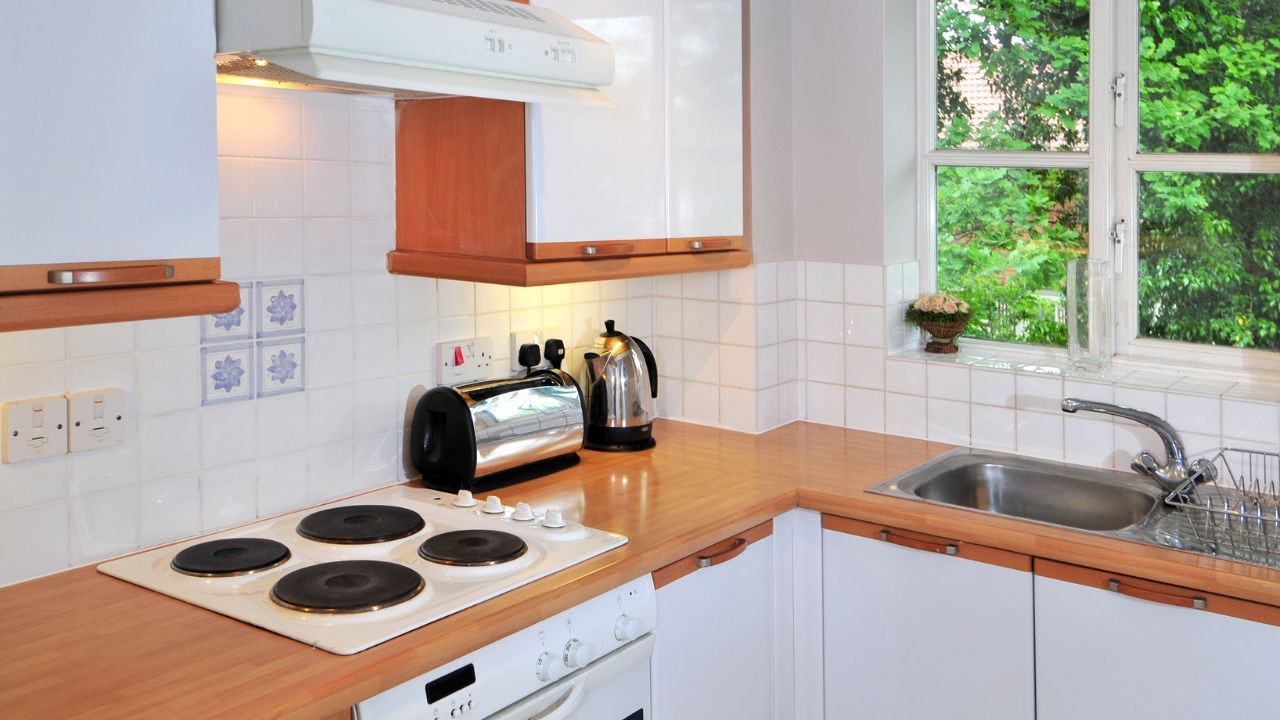
Recording audio in the kitchen
They may feel more narrow or industrial than other rooms in the house, both because of construction (many kitchens in apartments are underwhelming) and because of the contents (all those pots and pans). Still, kitchens can be great to bring a little bit of liveliness to your sound.
Here’s a clip of the guitar amp placed on the kitchen counter. Note the brightness to the sound, the tighter bass, and the reverberation.
And here’s the tambourine:
Pros of recording in the kitchen: Kitchens are more lively than a bedroom/living room, but less reverberant than a bathroom.
Cons of recording in the kitchen: Kitchens can impart a narrow and somewhat harsh tone—which could be what you need for a warm part that has to cut through the mix.
Recording in the bathroom
If there’s one room in the house with personality, it’s the bathroom. The combination of reflective tile, hard countertops, and mirrors creates a distinctly reverberant timbre, and a fun one at that—after all, who doesn't love singing in the shower? The reverb can make you feel more resonant, more in tune; and who doesn’t want that?
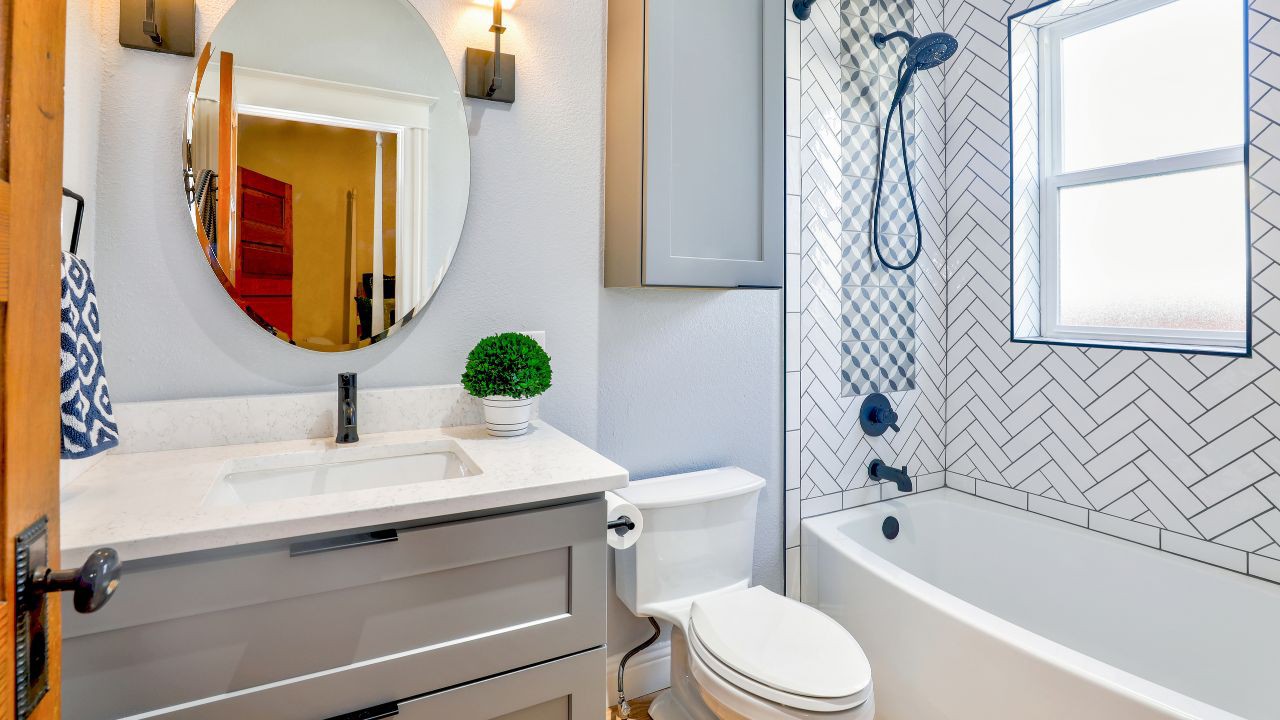
Recording audio in the bathroom
Here’s a clip of the same guitar amp in the bathroom. Hear how this time there is a distinct reverberance, but also a robust low end due to the small size of the room.
And here’s the tambourine:
Pros of recording in the bathroom: You’ll capture a unique reverb along with whatever you record.
Cons of recording in the bathroom: You’ll capture a unique reverb along with whatever you record. Also, the bathroom poses a potential hazard to your gear (please don’t drop your mic in the toilet).
Recording in the bedroom
The bedroom is the most common place to record in the house. In addition to having a space for yourself, the bedroom is also a comfortable place to generate new musical ideas. Recording there can feel quite natural.

Recording audio in the bedroom
Also, we tend not to choose huge, echoey, busy-sounding chambers for our bedrooms. We usually make the room feel cozy with decor, art, and comfortable furniture. The very things that help in a cozy vibe also serve a sonic purpose. Blankets, furniture, carpets, and bookcases filled with books you’ll never read can help absorb and diffuse sound.
Bedrooms tend to be smaller rooms, which usually results in a shorter room reverberance. Additionally, small rooms tend to enhance the sound of bass—although not always for the better.
Here’s a recording of an electric guitar amp 20 inches away from the front of the amp. Note the relatively dry sound compared to previous examples, as well as the robust low end.
And here’s a tambourine recorded the same way. Similar to the guitar, the sound is relatively dry.
Pros for recording in a bedroom: The bedroom usually has the deadest sound in the house.
Cons of recording in a bedroom: Bass can be an overwhelming problem in small, square rooms—and bedrooms tend to be small and square. Also, in most apartments, the upstairs/downstairs neighbors will have their bedrooms directly abutting you. They will not appreciate a constant barrage of noise entering their sleeping environments.
Recording in the living room
Living rooms have sonic similarities to bedrooms, thanks to the cozy furniture doing its part to absorb sound waves. Still, as living rooms tend to be larger, they have a distinct character all their own. As a plus, living rooms can be a comfortable place to record, especially with multiple musicians present.
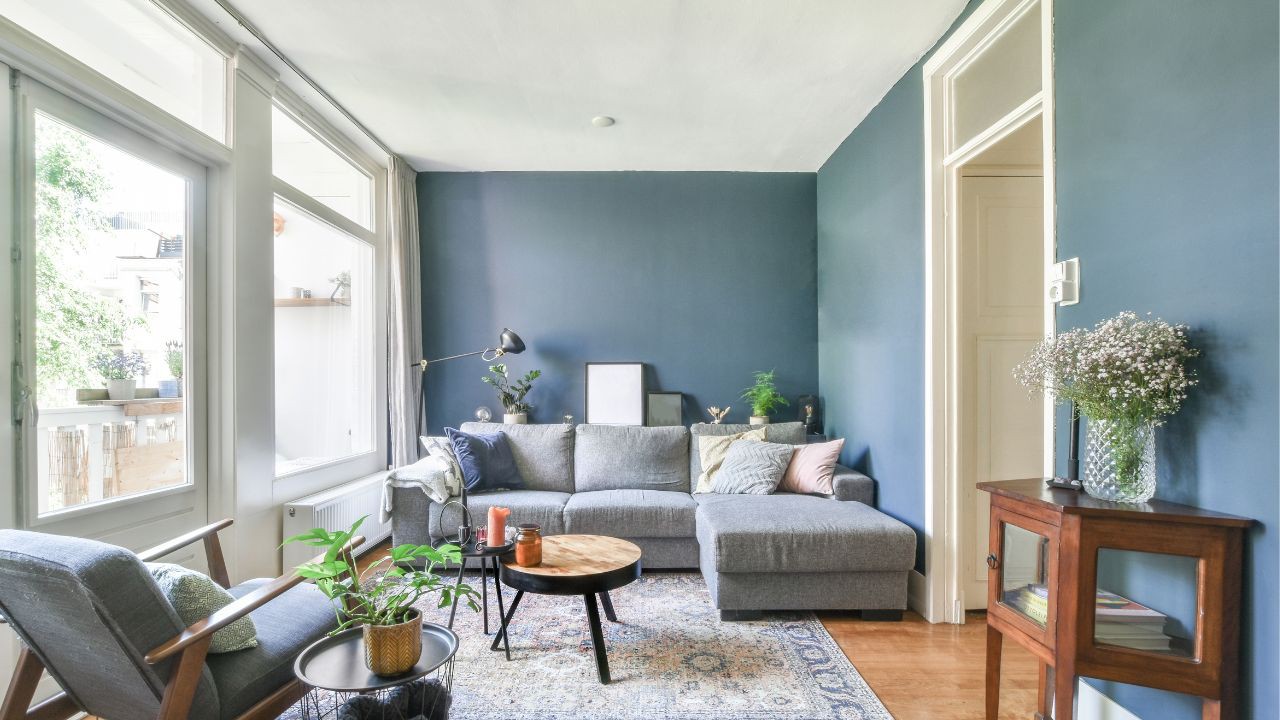
Recording audio in the living room
Here’s a clip of the guitar amp in the living room. This living room has a similar sound to the bedroom, but with a little more reverberance and energy.
And here’s the tambourine:
Pros about recording in a living room: Bass might be less overwhelming in a living room compared to a bedroom, making it easier to capture a less boomy recording.
Cons about recording in a living room: As soon as you drag recording equipment into a living room, it ceases to be a living room.
How to remove unwanted room noises
Home recordings usually come with noise no matter what you do. I know whenever I choose to hit the red button, that’s when the police cars and ambulances and fire engines decide it’s time for an aria.
Luckily a tool like iZotope RX can help remove noise from your recordings no matter where you put up a mic. I’ll show you how good RX is at removing noise by using RX’s Spectral De-noise plug-in in my bedroom while I run the air conditioner at the same time.
I load RX, and loop some room tone—audio where I don’t talk, just capture the sound of the room going. I click the learn button like so:

Selecting "Learn" in RX Spectral De-noise plug-in will learn the noise profile of the room
I tweak some things by ear, and land here.

Settings in RX Spectral De-noise tweaked after learning the noise profile of the room
It sounds like this. Not bad, eh?
And that’s just one of the modules you’ll be able to find in RX. Plenty of others come in handy while recording in a home studio, such as De-hum (for power issues), Dialogue De-reverb (for getting rid of room ambiance), and more.
Use the best room in your house
While recording at home has many limitations, it can be fun to flip them around and use the home to your benefit. So try experimenting for yourself to see how the different rooms in your home sound. Don’t forget to try different places within the same room.
Once you get a feel for the different timbres you have available to you, think about how they could complement your recording needs. Remember: experimentation is key!
And if you need help with removing unwanted room noise in your home recording space, you can demo RX for free to help you get a clean, professional sound at home.
